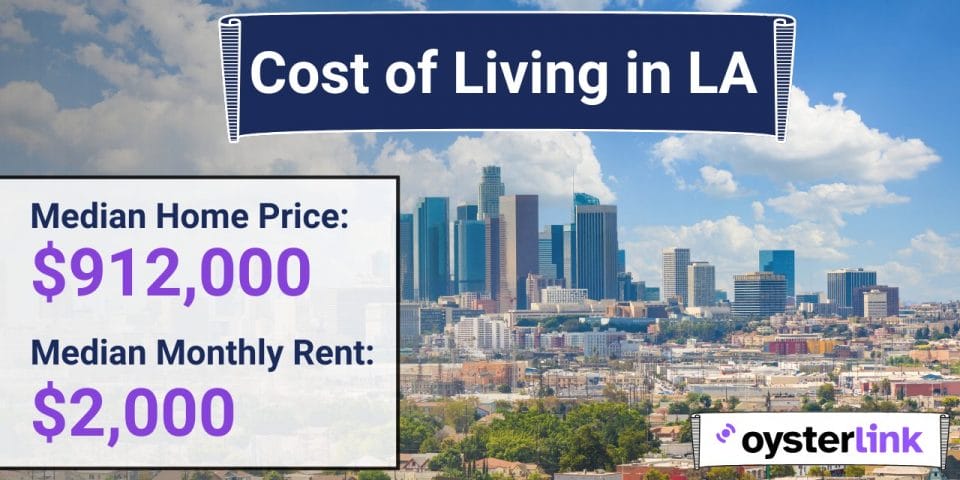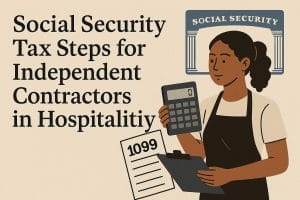Los Angeles is renowned for its sunny climate and vibrant culture – but it’s also known for a high cost of living. In 2025, LA ranks among the most expensive cities in the U.S., though still slightly more affordable than New York or San Francisco.
Even so, Angelenos face steep expenses in housing, transportation, and other essentials, far above national averages. This comprehensive guide breaks down the key components of LA’s cost of living – from housing and utilities to groceries, healthcare, and taxes – with historical trends since 2000 and comparisons to other major cities.
Here’s a cool video explaining exactly how much you can expect to spend in LA whether you’re buying a house, renting, or just wondering how much utilities will cost you.
Housing Costs
Housing is by far the largest expense in Los Angeles. The median home price in LA County has skyrocketed from around $221,000 in 2000 to about $912,000 in 2024. That’s over a fourfold increase in 25 years, reflecting surging demand and limited supply.
By mid-2023, the median listed home price in the City of Los Angeles was about $975,000, and it’s on track to soon top the $1 million mark. Buying a median-priced house would consume roughly 77% of the median household income in LA, illustrating a huge affordability gap.
Renters face high costs as well. As of 2025, the median rent for a one-bedroom apartment in Los Angeles is roughly $2,000 per month, while a two-bedroom runs around $2,600. (By comparison, back in 2000, a one-bedroom’s fair-market rent was only in the $700s – rents have roughly tripled since then.)
Rental prices vary widely by neighborhood: trendy areas like Santa Monica or Downtown command higher rents, whereas suburbs are cheaper. Still, Los Angeles rents are 42% above the U.S. average in 2025.
Utilities and Basic Services
After housing, utilities are the next essential expense. A typical LA household spends around $375 per month on basic utilities. This includes:
- $150 for electricity (powering air conditioning in summer)
- $80 for water (California’s water isn’t cheap)
- $50 for gas (for cooking and heating)
- $70 for internet
- $25 for trash services
Los Angeles has been pushing for water conservation and renewable energy, which may influence prices. Water rates have risen due to droughts and infrastructure upgrades.
Transportation Expenses
Los Angeles is a car-centric city, and transportation costs here can be substantial. If you drive, gasoline will be a notable expense – California gas prices are among the highest in the nation. In 2024, Los Angeles gas prices averaged about $4.75 per gallon, well above the U.S. average (~$3.50). A typical LA commuter might spend $150–$200 a month on gasoline.
Public transportation is relatively affordable, with Metro offering $1.75 per ride fares and a daily cap of $5. This means regular transit users won’t spend more than $18 per week on fares. However, LA’s sprawling layout makes owning a car almost essential for many.
Grocery and Food Costs
Grocery costs in Los Angeles are about 10–20% higher than the national average. Common prices include:
- Gallon of milk: $4.50
- Loaf of bread: $4.30
- Dozen eggs: $5.60
- Boneless chicken breast (per lb): $6.00
- Pound of apples: $2.50
Dining out is a way of life in LA, but costs vary:
- Fast food meal: $12–$15
- Casual sit-down restaurant: $20–$25 per person
- Mid-range restaurant: $100+ for dinner for two
Healthcare Costs
Healthcare is expensive in Los Angeles, even by U.S. standards. The average premium for an individual Silver-tier health plan is around $621 per month in 2025. With employer assistance, many pay less, but for those buying their own insurance, costs can be steep. A simple doctor’s visit (without insurance) can range $150–$300, while prescriptions tend to cost more than in other states.
Taxes in Los Angeles
- Income tax: California’s state income tax ranges from 1% to 13.3%, the highest in the nation.
- Sales tax: The Los Angeles County sales tax is 9.5%, with some cities slightly higher.
- Property tax: Effective tax rate around 0.71%, relatively low but applied to high home values.
Cost of Living in Los Angeles FAQs
A single person needs at least $75,000 per year to cover expenses comfortably, while a family of four typically requires $130,000–$150,000.
Renting is usually cheaper month-to-month, but homeownership builds equity over time. A $900k home might cost $5,000+ per month in mortgage and taxes, while renting a similar home might be $3,500–$4,000.
LA is expensive but still cheaper than New York and San Francisco. It’s about 50% costlier than the U.S. average.
Yes – places like Riverside, San Bernardino, and Palmdale offer significantly lower housing costs but require long commutes.
Final Thoughts
Los Angeles remains one of the most desirable – yet costly – cities to live in. While expenses continue to rise, strategic budgeting and smart housing choices can help mitigate costs. If you’re considering a move, carefully weigh salaries against expenses to ensure financial stability in the City of Angels.




